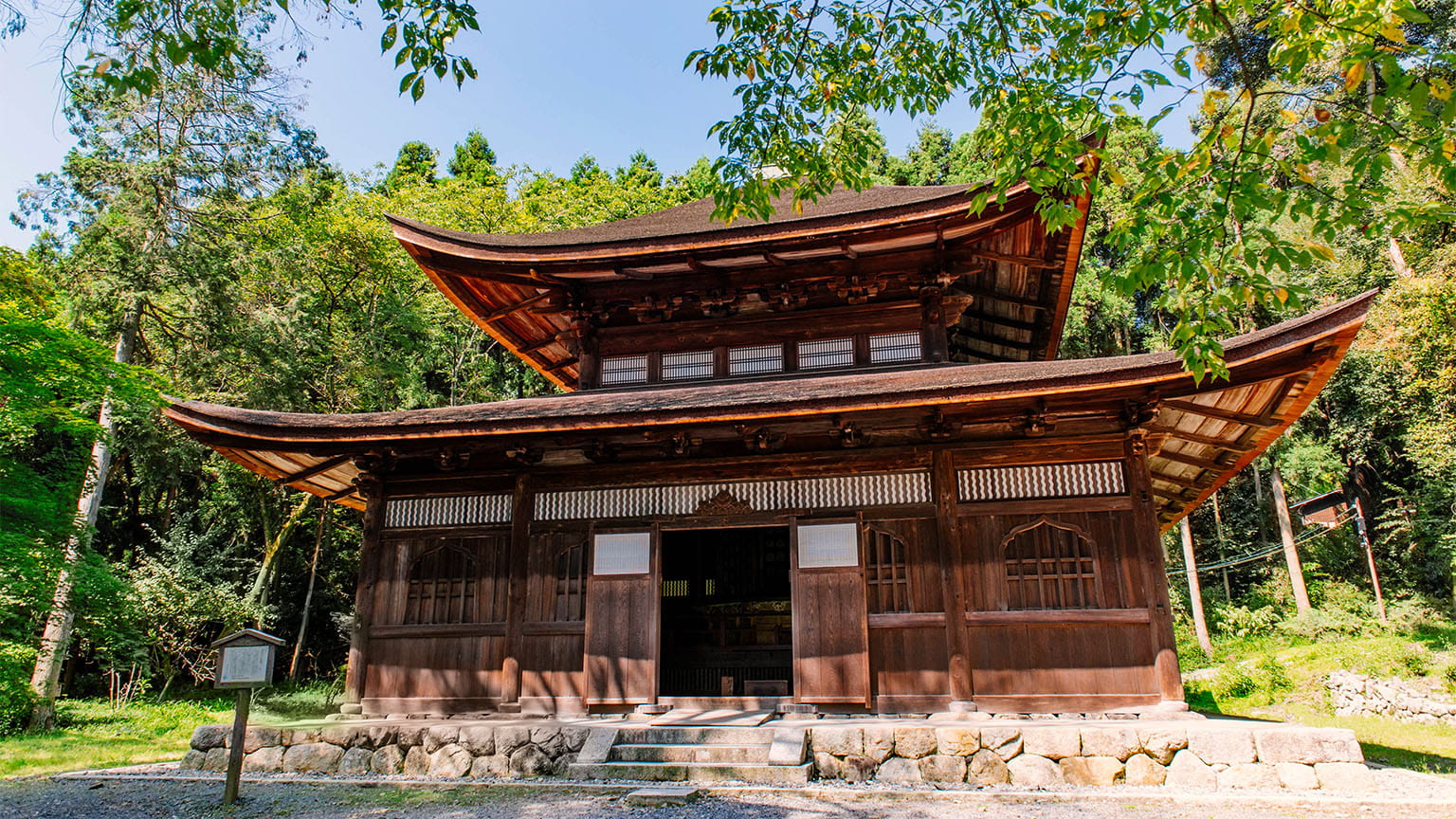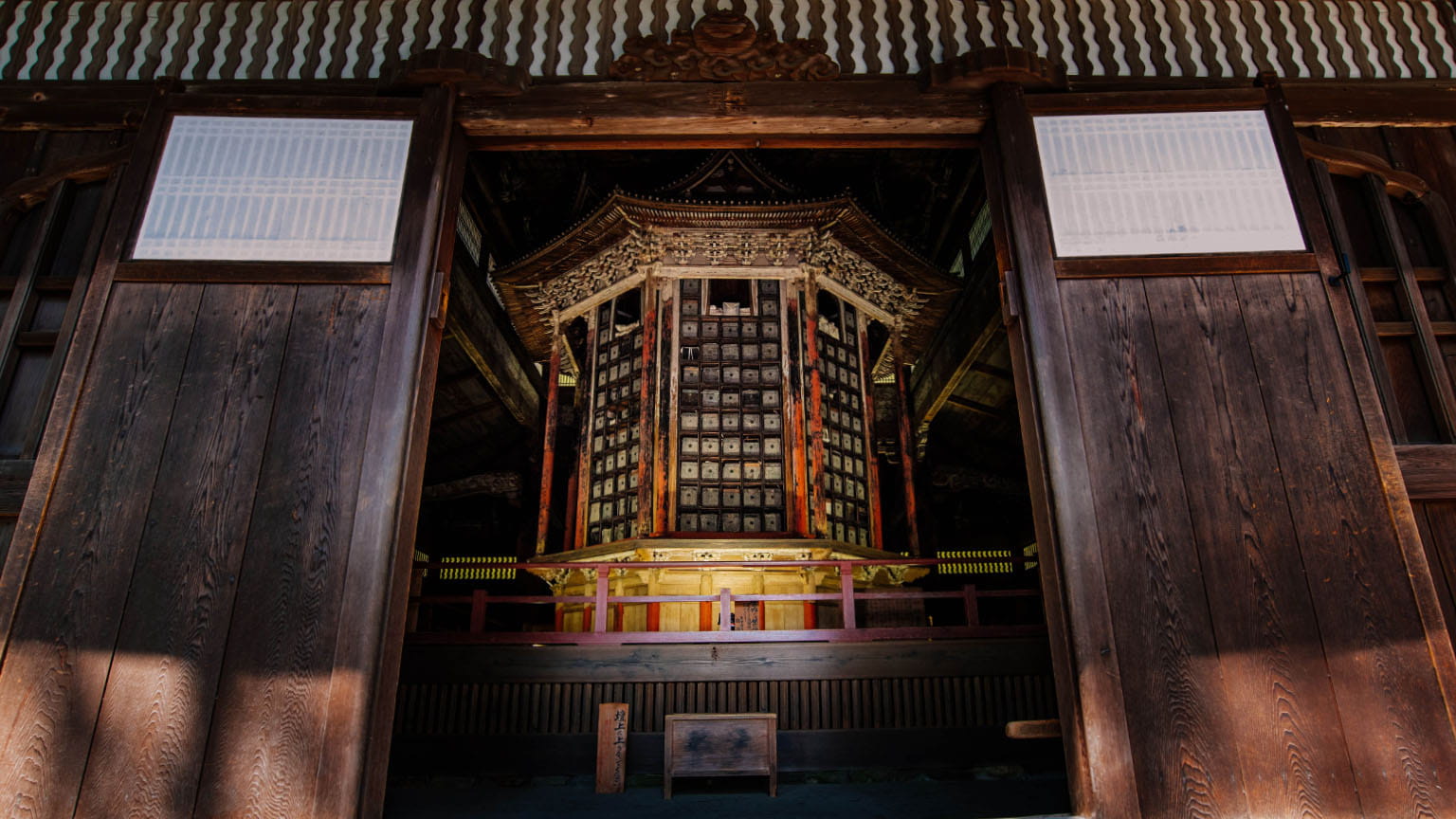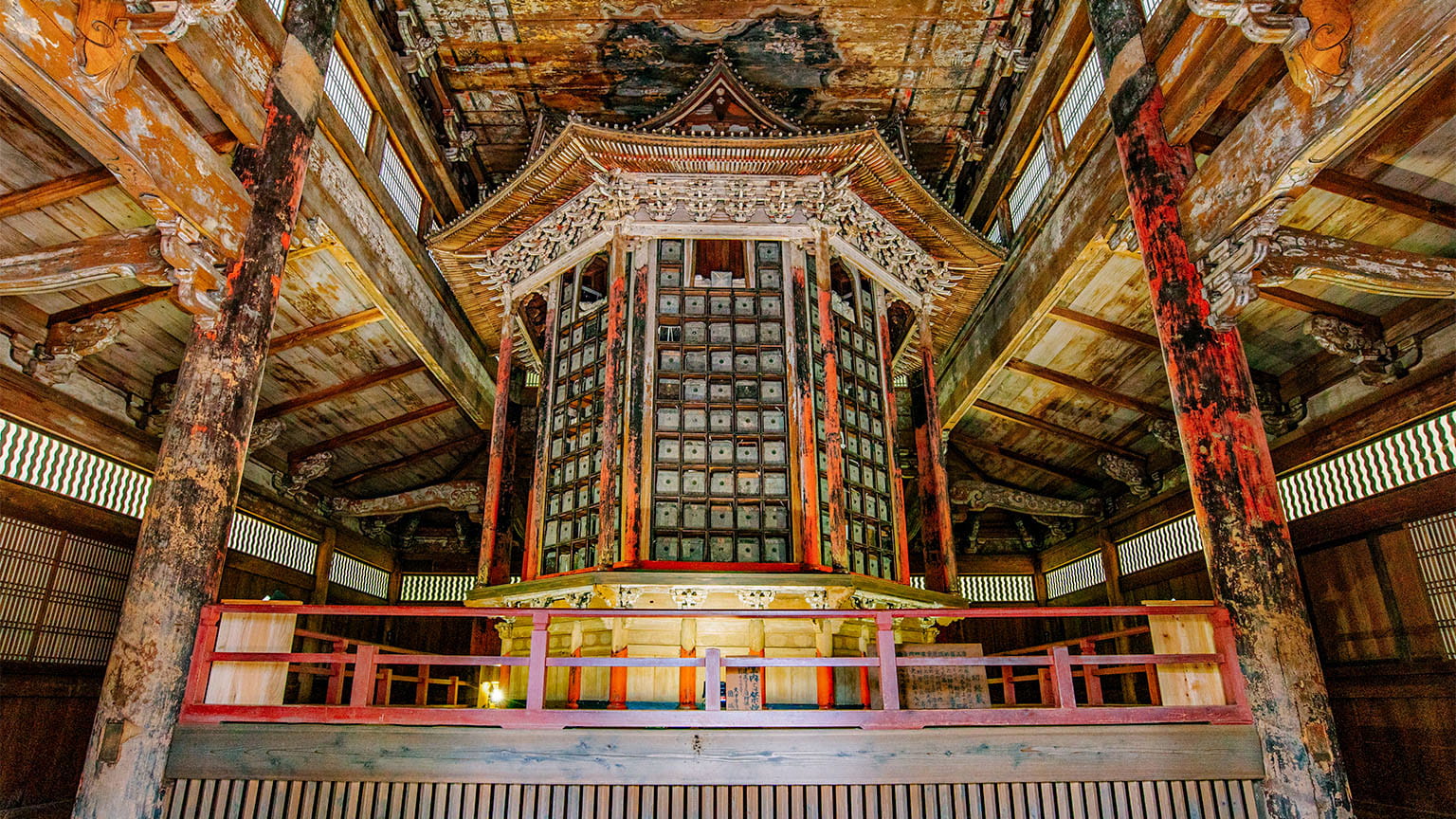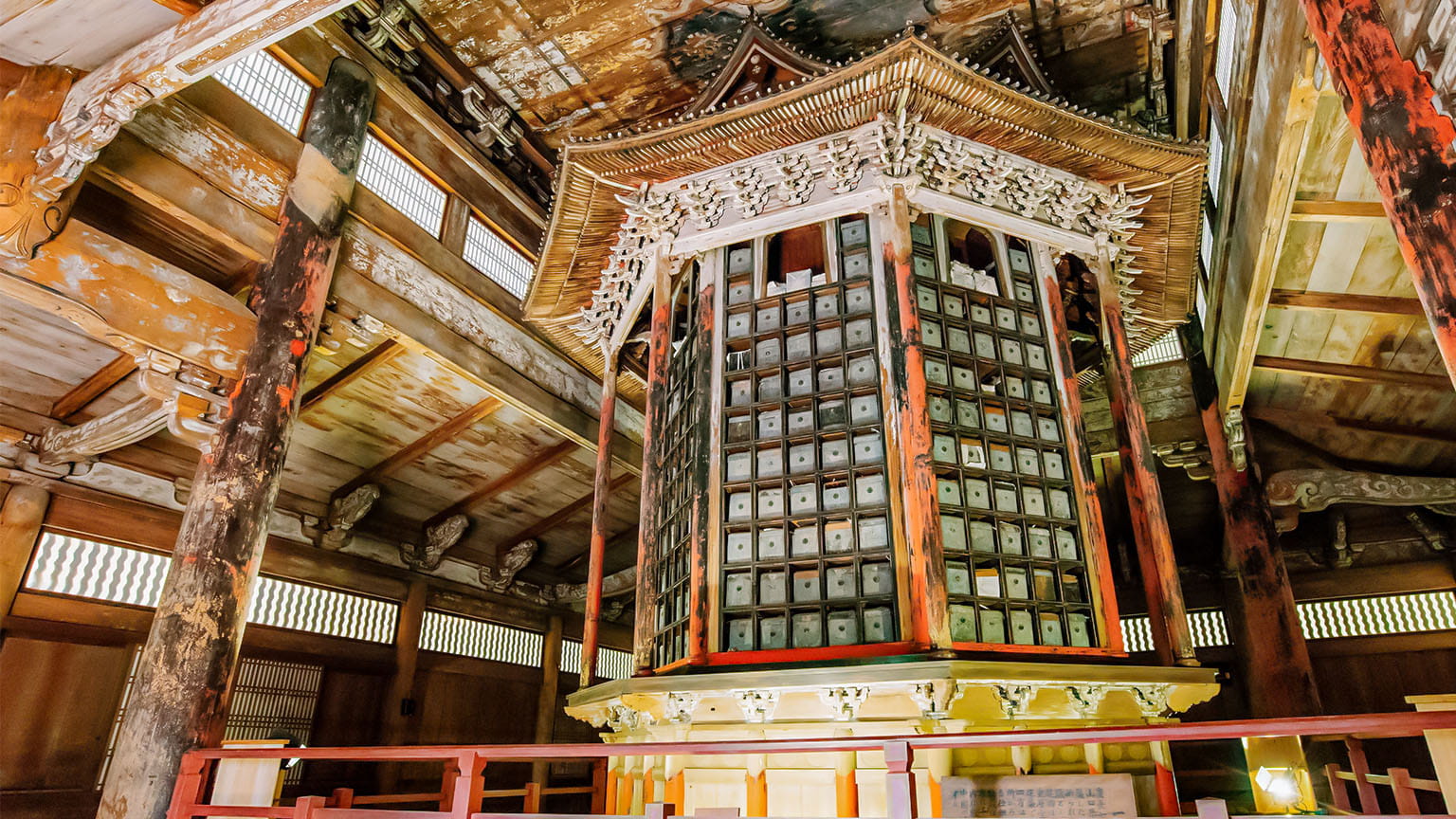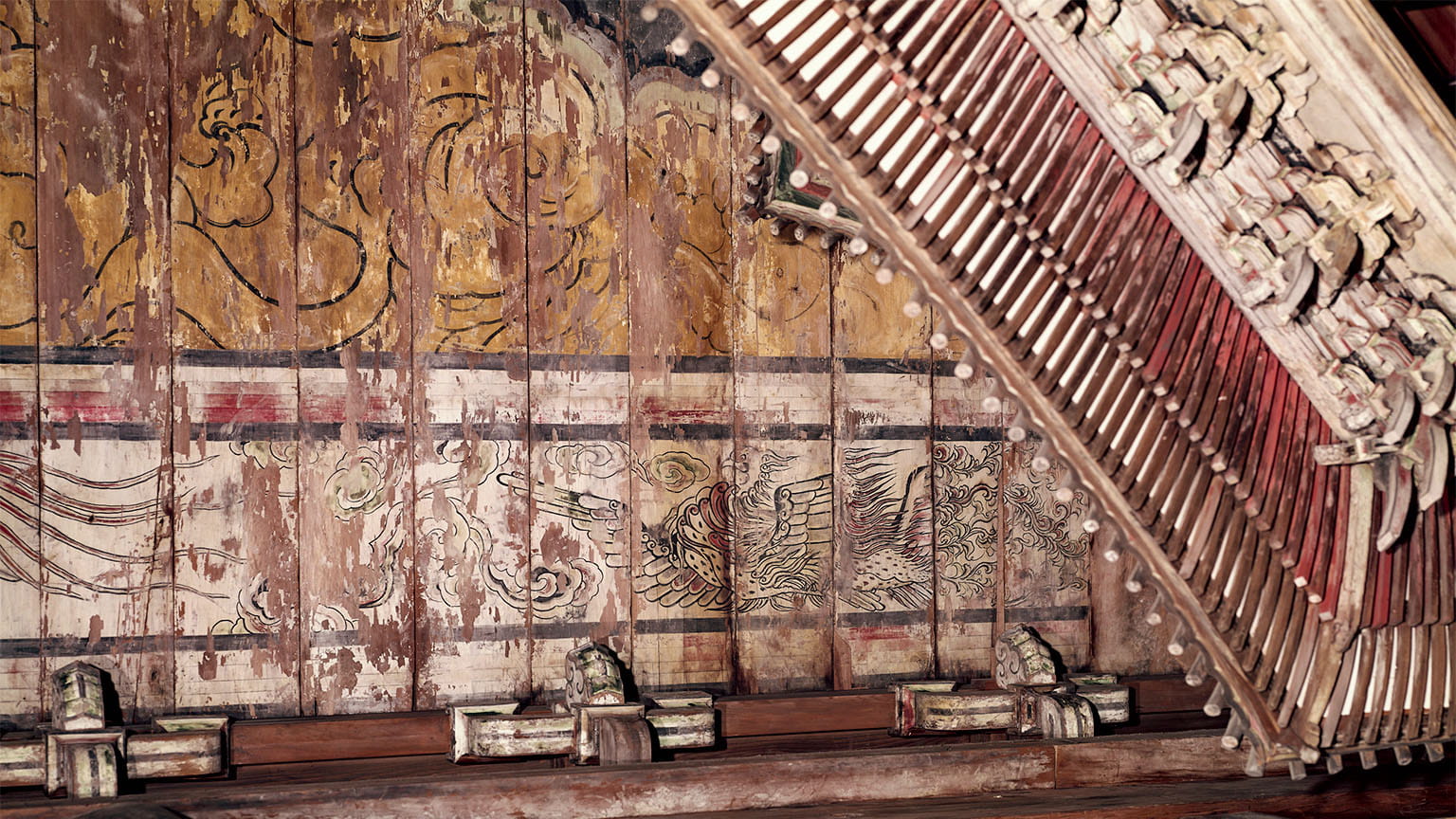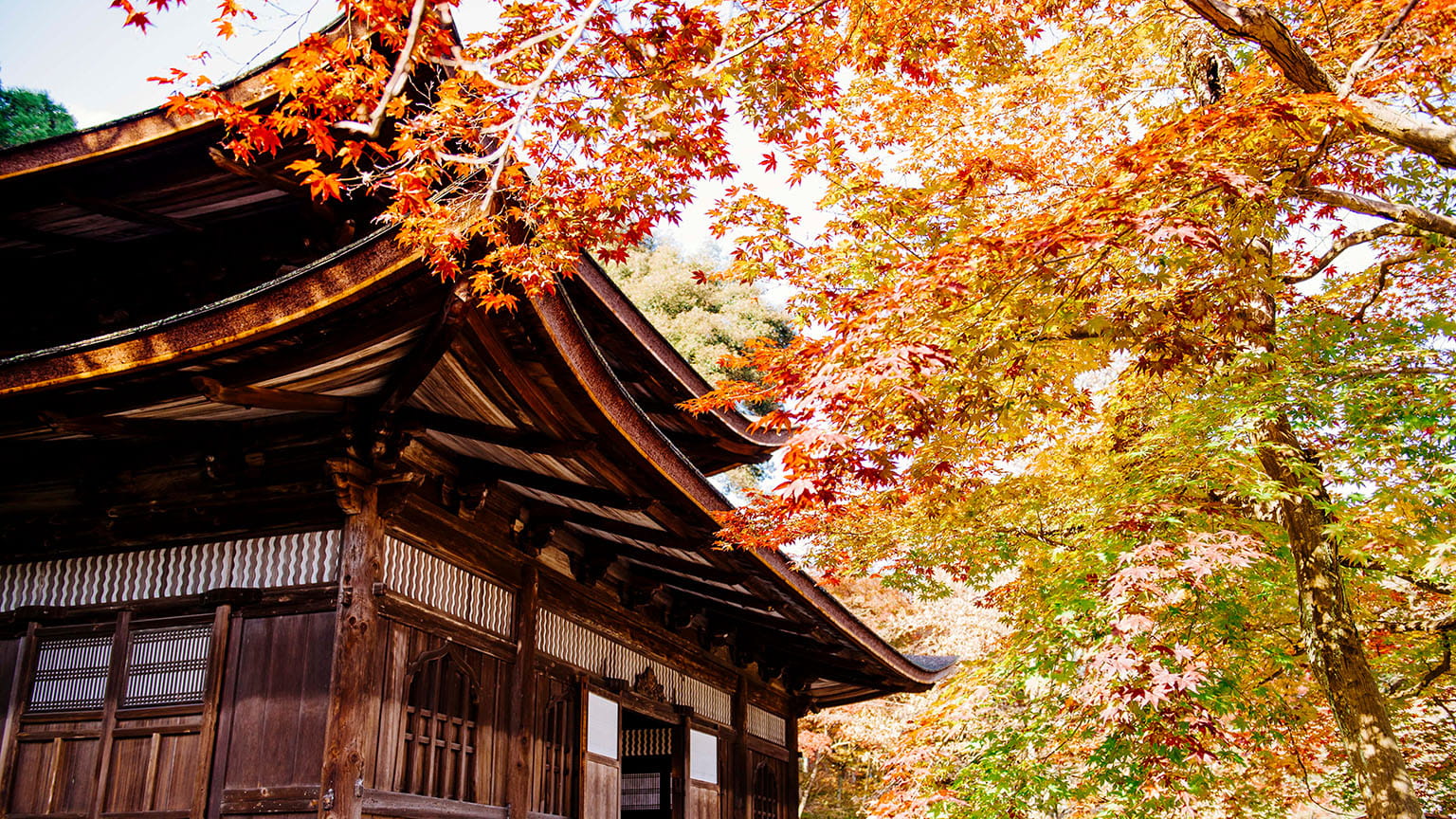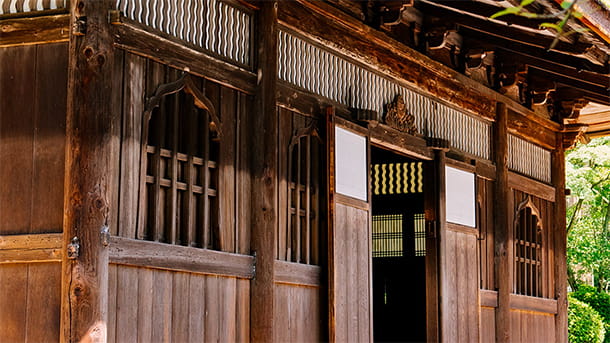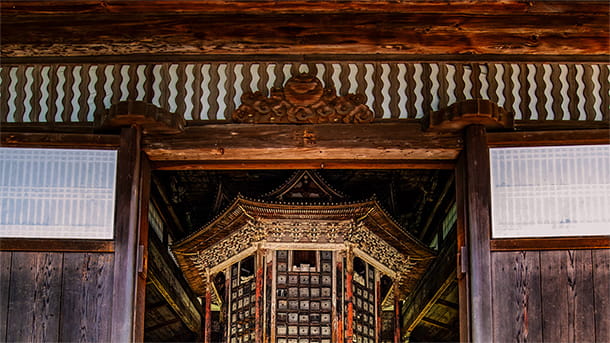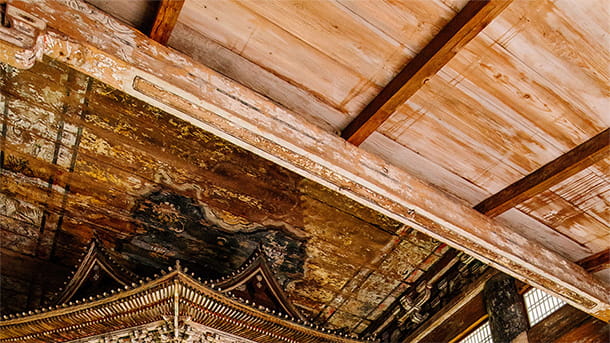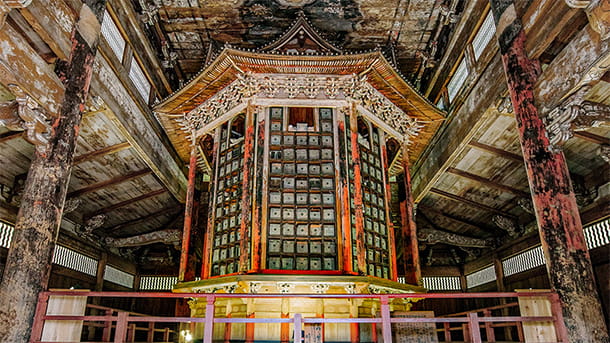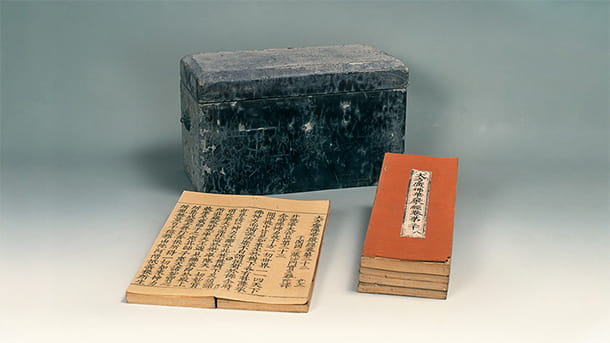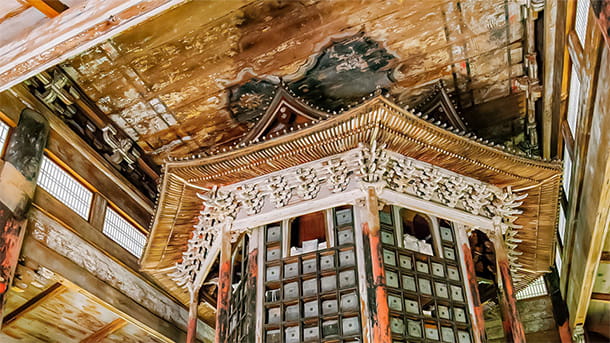Cultural Property of Japan
Issaikyozo Buddhist
Scriptures Storehouse
Scriptures Storehouse
READER
This is the only Zen-style building in the Miidera Temple complex. It was originally the scripture storehouse of Kokushoji Temple (present-day Toshunji Temple), located in Yamaguchi Prefecture, but was moved to its present location by the warlord Mori Terumoto in 1602.
The combination of curved katomado windows and latticed, bow-shaped ramma transom windows on the exterior of the building, together with earthen floors and panel-lined ceilings on the interior, are characteristic of conventional Zen-style design.
An octagonal rotating shelf set in the central part of the building’s interior stores issaikyo Buddhist scriptures which include sutras and other Buddhist writings. This is an invaluable example of an old Zen-style sutra house of the Muromachi period (1336–1573); it is the only one of its kind with gables on each of the eight sides of the roof and pillars that stand in front of the drawers used to store lacquered sutra cases.
- −
- Muromachi Period
Please rate this cultural heritage introduction page.
-
-
Satisfaction
-
-
Understanding
-
-
Recommendation
-
-
Attractiveness
-


